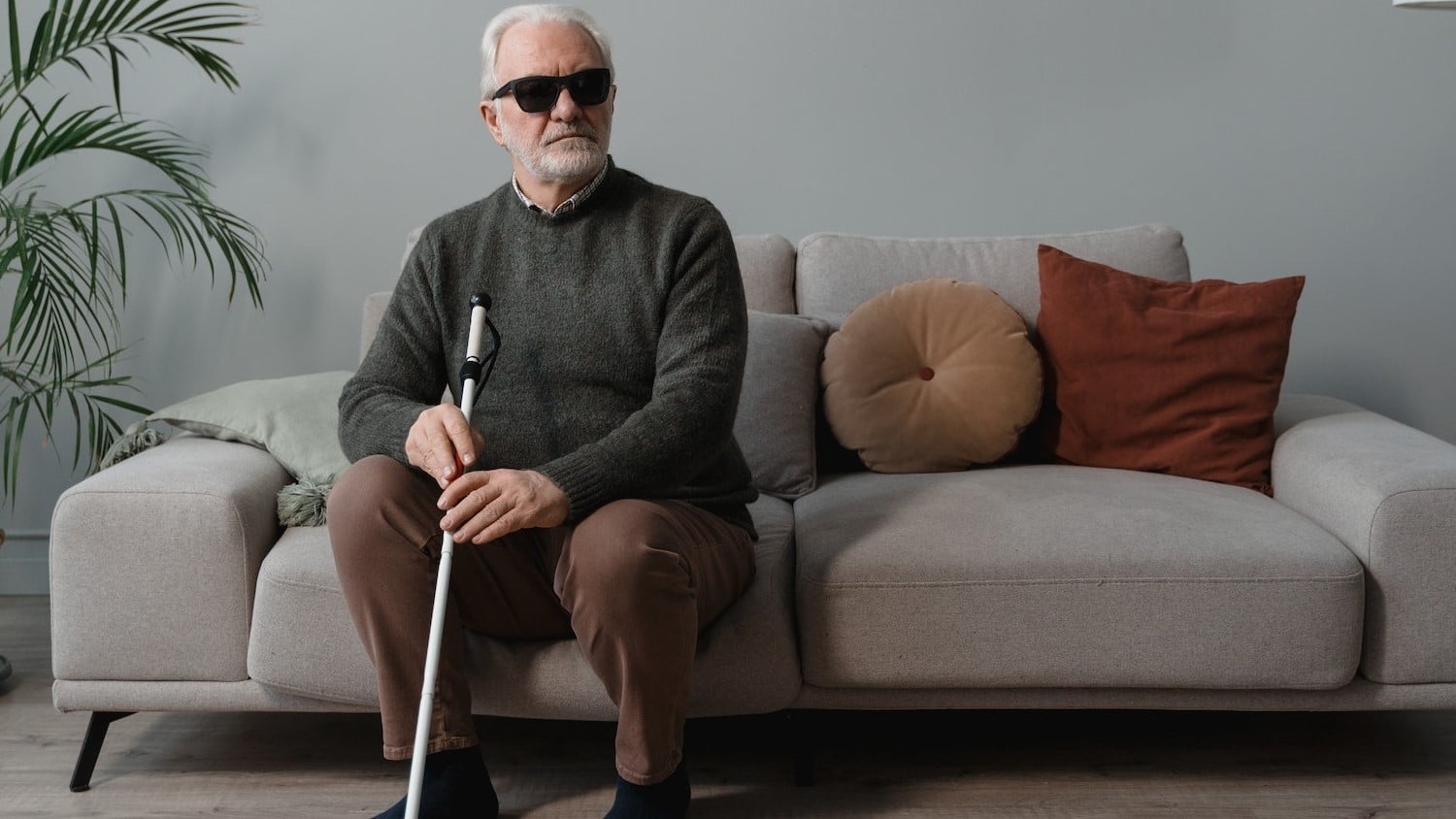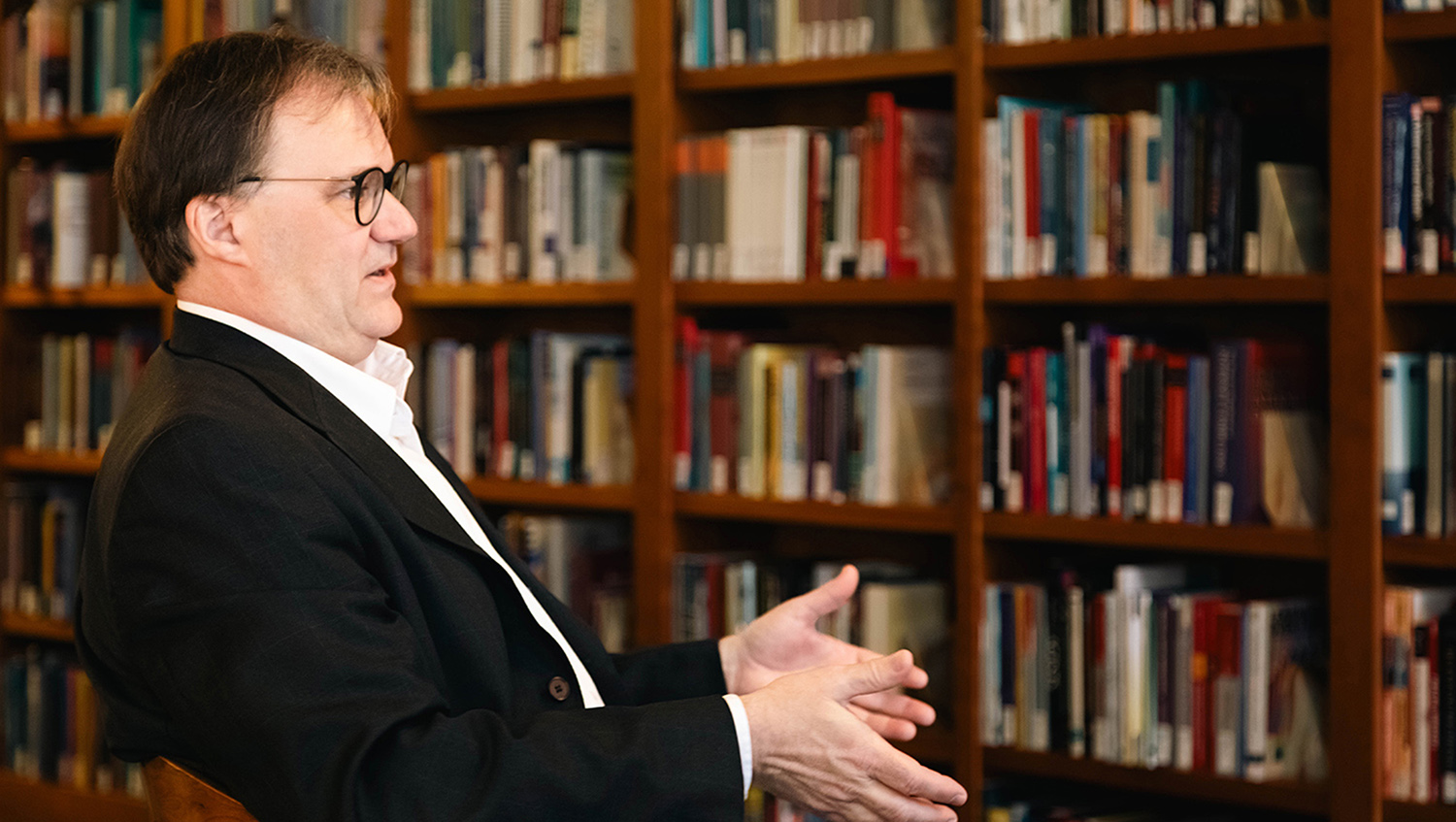For Immediate Release
A recent study highlights the range of uncomfortable situations people living with blindness or visual impairment encounter due to interpersonal communication challenges, and outlines strategies people with visual impairment use to navigate these situations.
“This work validates the lived experiences of people with visual impairment,” says Lynsey Romo, corresponding author of the study and an associate professor of communication at North Carolina State University. “It also provides tangible ways blind and visually impaired individuals, as well as sighted people, can use communication to create more positive social interactions.”
“I’ve encountered countless instances of uncomfortable interactions with others, but the turning point for me was when I brought my guide dog to the vet and she talked to my driver as if I weren’t in the room,” says study co-author Melissa Taussig, a mental health professional with a lifelong visual impairment. “That visit was the catalyst for me to collaborate with Lynsey to explore how other people living with blindness or visual impairment navigate these circumstances.”
For this qualitative study, the researchers conducted in-depth interviews with 24 adults in the United States who are living with blindness or visual impairment. The interviews focused on social interactions, feelings of stigma and uncertainty, and techniques interviewees developed for managing these social interactions.
“We found uncomfortable social interactions are inherently part of living with blindness,” Taussig says. “Blind and visually impaired individuals can miss visual cues that sighted people take for granted. And people often don’t know how or whether to speak directly to us.”
“These interactions can be awkward because people with visual impairment often have to ask for help with day-to-day tasks, like getting a ride to the store or finding the elevator in an unfamiliar building,” says Romo. “Such requests may be awkward for sighted people who have differing degrees of awareness or experience with the blind community. Some may want to help but don’t know how. Others have good intentions but end up overstepping.”
Study participants also commonly reported feelings of shame and isolation related to their blindness, which was often reinforced by the uncomfortable nature of many of their social interactions.
“We want people living with blindness to know that they are not alone in feeling this way,” Taussig says. “There’s nothing wrong with them, and many of us living with visual impairment share these experiences. Fortunately, we found strategies people with visual impairment effectively use to navigate social interactions with sighted people.”
Strategies generally fell into two categories: reducing the likelihood of having an awkward encounter and recovering from an awkward encounter.
Examples of techniques for avoiding awkward encounters included:
- Disclose blindness: “Some participants found it helpful to disclose their blindness clearly and succinctly at the beginning of an encounter to reduce uncertainty and accomplish specific goals,” Romo says. “For example, one study participant talked about opening a conversation by saying ‘I’m blind and could use some help finding this address.’”
“Disclosing blindness can be emotionally exhausting because we’re often tasked with explaining ourselves to others, but it does help us get access to resources that we wouldn’t otherwise have,” says Taussig.
- Use nonverbal cues: Researchers found guide dogs and canes can serve as a nonverbal indication that someone is blind, and guide dogs in particular often serve as a social bridge to others.
- Be polite: Participants said interactions went more smoothly when they used certain phrases. For example, adding a “please” before a request, saying thank you, or asking “would you mind giving me a ride when you get a chance” made helpers feel more appreciated while accomplishing visually impaired individuals’ goals.
Examples of ways to recover from awkward encounters included:
- Humor: Humor involved self-deprecation and jokes, for instance, calling oneself a “blind girl” or joking, “Is it buy five operations, get one free?” to a surgeon prior to one participant’s sixth eye operation.
- Education: Some participants talked about educating sighted people with explanations on what their cane was for or tips on how to talk to blind or visually impaired people.
- Advocacy: Some participants talked about advocating for their rights and the rights of other people living with blindness or visual impairment. For example, informing restaurants and ride share services about illegal practices (such as refusing service to someone with a guide dog) in order to combat structural barriers.
The researchers also drew on the study to outline constructive ways allies can support people with visual impairment.
- Offer help directly and specifically: “For example, allies will often say, ‘Let me know if you need something from the store,’” Taussig says. “That’s a really kind thing to say, but it can create anxiety for people with blindness to ask for help. It’s much more helpful to say something like ‘I’m going to the store, what can I pick up for you?’ or ‘I’m going to the store, would you like to come?’ This approach feels more like an invitation and can alleviate the fear of being a burden.”
- Introduce yourself: “Another easy thing that allies can do is introduce themselves when meeting with a person who is blind – say your name when you walk up,” Romo says. “People often forget that those with visual impairment can’t recognize their face, and people with visual impairment may not recognize an individual based on their voice alone. They also may not see your wave, so sighted people shouldn’t be offended.”
- Hands off: “It important to not touch someone who is blind – or pet their guide dog – without their permission,” Taussig says. “It’s much better to explicitly ask whether a person who is blind needs help crossing the street or if they’d like help in some other way.”
“Conducting this study underscores how little research is out there on the lived experiences of people with visual impairment and the challenges they face in navigating social situations,” Romo says. “Based on our interviews, even people living with blindness know very little about how common their experiences are.”
The study, “An examination of visually impaired individuals’ communicative negotiation of face threats,” is published in the Journal of Social and Personal Relationships. The paper was co-authored by Cimmiaron Alvarez of Rutgers University. The work was made possible by funding from NC State’s College of Humanities and Social Sciences.
-shipman-
Note to Editors: The study abstract follows.
“An examination of visually impaired individuals’ communicative negotiation of face threats”
Authors: Lynsey K. Romo, North Carolina State University; Cimmiaron Alvarez, Rutgers University; and Melissa R. Taussig
Published: July 7, Journal of Social and Personal Relationships
DOI: 10.1177/02654075221114048
Abstract: Being visually impaired is an inherently face threatening and potentially stigmatizing experience that can greatly affect personal relationships. Those with a visual impairment frequently miss nonverbal cues, must rely on others for transportation and other assistance, and can be overtly marked as different through their use of a cane or a guide dog. Framed by the theoretical lens of facework and using in-depth interviews of 24 visually impaired individuals, this study uncovered how people with a visual impairment engaged in facework to mitigate and remediate the low-vision-related face threats they and others experienced. Participants reported using preventive facework, including politeness and humor, as well as corrective facework (avoidance, apologies, accounts, and humor) to manage face threats. Interviewees also engaged in a new type of facework that was simultaneously corrective and preventive: future facework (education and advocacy). Findings offer practical strategies visually impaired individuals can use to ward off or repair face threatening acts, contesting stigma and potentially improving relationships and fostering allyship among sighted individuals. The study also suggests that facework be incorporated into a biopsychosocial model of disability to help combat disabling social barriers.
This post was originally published in NC State News.
- Categories:



